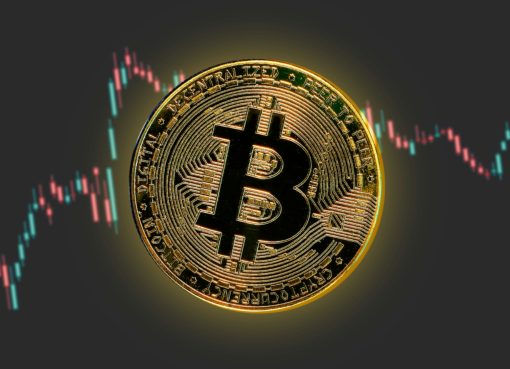On May 10, 2019, the famed YouTube beauty influencer Tati Westbrook posted a 43-minute video that forever changed the course of internet culture.
The video, titled “BYE SISTER,” was a takedown of Westbrook’s fellow beauty influencer James Charles, who had, until that point, been her close friend. In the video, Westbrook said her feelings were hurt because Charles promoted a hair care vitamin that was a competitor to one Westbrook sold. (Charles denied taking money for the promotional post; instead, he said he got artist passes for Coachella in exchange.) Westbrook said she confronted him over text, and their conversation did not go the way she had hoped. At the time, she saw Charles was giving statements to YouTube drama channels about the hair care vitamin situation, which prompted her to share the video.
Westbrook also said she was uncomfortable with some of Charles’ actions and accused him of using his fame to coerce straight men into sex. She also said Charles lied about details regarding the sponsored post for the hair care vitamins.
The YouTube community waited with bated breath for Charles to respond, which he did in a hastily made video titled “tati” that was panned for being “inauthentic.” Charles later deleted the video, and released another response, “No More Lies” on May 18, which still lives on his YouTube channel. In it, he attempted to clear the air, saying Westbrook’s accusations hurt him. He apologized for promoting her competitor’s product. Charles also addressed Westbrook’s claims about his alleged behavior, saying, “I have never and will never use my fame, money, or my power to manipulate or get any sexual actions from a guy. That is disgusting.”
The back-and-forth caught the attention of Jeffree Star—a beauty YouTuber with a brash personality who had collaborated with Charles in the past—who also joined in making allegations against Charles. In “No More Lies,” Charles reads texts from Star that pile on more insults and accusations.
Westbrook, Charles, and Star did not immediately respond to TIME’s requests for comment on the effect and influence of the moment online, which came to be known as “Dramageddon 2.0” or “Sistergeddon,” on the occasion of its five-year anniversary. (This saga followed another one, called “Dramageddon,” which took place in August 2018 and also involved Jeffree Star and the breakup of his friend group of beauty content creators—an influential moment, but just a precursor to the bigger drama to come.) Following Sistergeddon, Star apologized in a video titled, “Never Doing This Again,” saying he regretted making hurtful comments toward Charles. Westbrook also uploaded a video called “Why I Did It” and called for the hate directed towards Charles to stop.
The internet has changed dramatically in the five years since these events. But the way in which online drama operates today is owed in large part to Sistergeddon and its aftermath. Sistergeddon “set the modern playbook by which all internet scandals operate now,” says Jessica Maddox, who researches social media platforms and internet culture at the University of Alabama.
TIME spoke to several experts on internet culture and social media to put into perspective just how influential the drama of May 2019 would turn out to be.
The aftermath of Sistergeddon
These events enraptured the internet, moving beyond the beauty gurus’ usual audience. According to Socialblade, a third-party site that tracks subscriber counts, Charles lost over one million subscribers in a day and over three million subscribers total—all of which he was able to recoup—while Westbrook gained over 3.5 million followers. This prompted a significant change on YouTube—the platform made it so creators’ exact subscriber counts were no longer shown, because exact counts were being weaponized to prove who was “winning” in the scandal. At the time, beauty communities on YouTube made up one of the most popular corners of the internet, not least for for their influence in promoting products that quickly sold out, but because they were ripe for drama—as seen in the Wesbrook-Charles-Star argument.
Their videos each racked up millions of views, bringing the YouTube community a new level of attention. The story was covered in mainstream publications, like CNN and The New Yorker, that did not typically dive into YouTube dramas. The moment stood out because Westbrook, Charles, and Star learned how to harness the power of the drama rather than let it diminish their influence, bringing along a wave of influencers with them. With this, the modern playbook for how drama can be wielded as a force for online clout was written.
Sistergeddon marked a shift in how we view YouTubers and influencers, says Brooke Erin Duffy, a communications professor at Cornell University. There was an increase in “efforts to dissect their ins and outs that brought people that maybe weren’t attuned to the influence of these personalities into the conversation about what YouTubers are, what they do, what they represent,” Duffy says. It also “defied the ethos of like support and community that early YouTubers were predicated on.” Before both Dramageddons, YouTubers were in community with one another, making collaborative videos, supporting each other, and seeming to be genuinely being friends.
How drama travels online today
Influencers sustain lucrative careers through a combination of brand deals and ad shares. Increasing their viewership is key to maintaining relevance and striking deals. “What’s the best recipe to get views? One is drama,” says Angèle Christin, a communications professor at Stanford University. Influencers will “pick a moral battle” with one another, she says, criticizing each other for various perceived wrongs, like “having sold out, being fake, inauthentic, or lying to their followers.” In the case of Sistergeddon, Westbrook used two of these tactics against Charles by accusing Charles of being fake and taking advantage of followers.
“It’s excellent for traffic because it’s the most popular content around. It’s impossible not to click on it,” Christin says. “But it’s also a great way to get your audience to support you against all odds.”
The support materializes outside of views—through buying merch, special subscriptions, and purchasing products through paid partnerships. It also signals to followers that influencers are on a moral high ground, “speaking truth to power,” and that your followers are “in it with you,” says Christin, adding that this helps influencers create loyalty and purity dynamics with their followers. “To get consistent views, you need viral videos and a solid base of subscribers who are going to be devoted to you and follow you no matter what.”
One of the best examples of this is drama channels, Christin says. “These channels thrive on drama, covering drama between YouTubers and even between other drama channels.” Drama or “tea” channels were the TMZ of YouTube, devoted to drama involving internet figures. The creators behind the channels released recap videos, shared their opinions, and added to an air of conspiracy. Some of the most popular at the time were Rich Lux, Peter Monn, and Dustin Dailey.
Drama channel Spill Sesh, which used to be anonymous, is run by Kristi Cook. She cut her teeth in the drama community during Sistergeddon. She had just started her channel around that time, and there wasn’t much interest in drama within the YouTube world until after that moment.
“It felt like every week after that, people were just more invested in YouTubers and influencers’ lives,” says Cook. Influencers were put under a microscope, and their every move was dissected to see if they could interpret any scraps of information to mean something more. “There was a real want for covering this part of the internet.”
Sistergeddon’s impact can be felt today in several ways, says Maddox. One tangible effect has been the recent trend of “de-influencing,” in which influencers tell their audience about products they don’t need to spend money on rather than the opposite.
“You can trace a line to the modern de-influencing trend back to Sistergeddon with the kind of veil being pulled back on influencer culture and kind of seeing the messiness under,” Maddox says, adding that the drama that took place during Sistergeddon started because of the inauthentic promotion of products and the gaming of influencer marketing for dramatic, false, and deceptive reasons. It marked one the first times where audiences saw an influencer be disingenuous about a sponsored post.
“We had the event, the immediate response from drama channels, but then we had the backlash, memes, and commodification,” she says. “By the time the brands get in it, that’s the kiss of death.”
One of the most recent examples of this modern playbook in action was the viral “Who TF Did I Marry?!” saga on TikTok from Reesa Teesa. The story became wildly popular, and quickly, TikTok’s version of tea channels, which Maddox refers to as “content curators,” began recapping the story into bite-sized clips, offering their takes and opinions. She says this spawned memes and then commodification—like when multiple brands began commenting on Reesa Teesa’s videos.
“Everybody wants a piece of the viral pie,” Maddox says. “People will jump on a viral train because that’s what algorithms and technological systems that underscore these platforms reward—the content that is getting the most attention.” The way drama internet communities view drama now is like a high-speed moving train: it’s zipping through your timeline, but you have to find the perfect time to jump on and ride to the end of the line.




